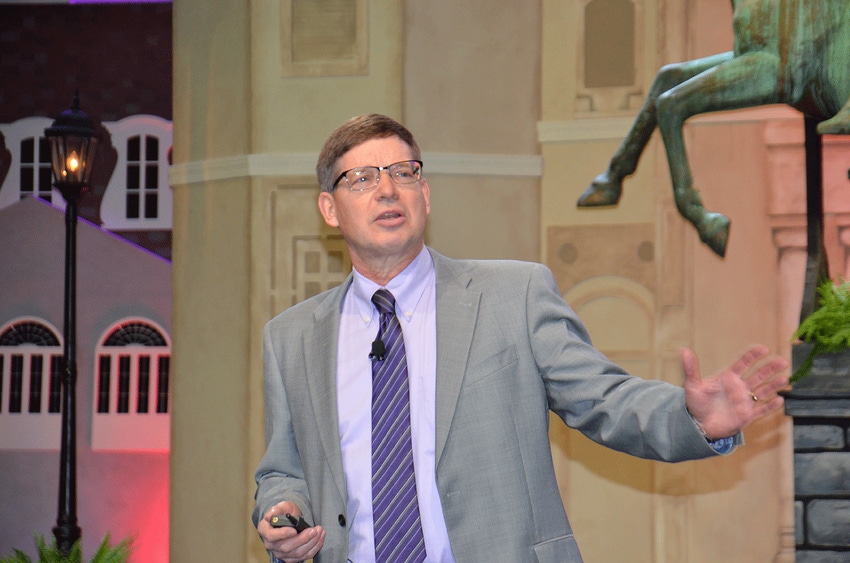CattleFax outlook session predicts better weather, slightly lower market prices.

It’s probably hard to imagine, for all those caught in the incredibly cold weather gripping much of the nation, that there is warmer weather coming. But keep the faith—it will.
That’s part of the prediction that Art Douglas, the long-time CattleFax weather man, gave at the CattleFax outlook session during the Cattle Industry Convention in New Orleans.
We’ve been a classic El Niño pattern, Douglas says. “This is an ideal situation for bringing storms into the West Coast. California has already had good rains and boy, they’re getting ready to have a long period of above-normal precipitation,” he says. “We’re going to see good storms starting to develop along the West Coast again, they’re definitely going to be moving into western North America. And eventually, probably by the time we get later in February, they’re going to be in the Southern Plains, too.”
Looking at the spring forecast, Douglas is forecasting a very mild spring all the way from Washington and Oregon across the U.S. to New York and relatively cool conditions in Texas. “Unlike most El Niños, this El Niño looks like it’s going to be relatively wet in the Pacific Northwest. On the other hand, in the Corn Belt, which has been relatively moist ever since last summer into the fall and winter, it’s going to be dry,” he told the beef producers in attendance.
“And I think this dry forecast is going to be good for planting. So we’re going to dry out the forecast, it’s going to be warm, have early planting and there shouldn’t be planting delays.”
Going into summer, he predicts a ridge of high pressure through the Northern Plains. “That ridge of high pressure is going to pick up some dry air out of Idaho, Montana and dump it down into the Corn Belt, which is something we need to watch out for. On the other hand, that high pressure will pull moisture from the monsoon in Mexico in to the Southwestern United States.
“We translate that into the forecast for the summer, temps remaining warm in the northern tier of states associated with that ridge and good moisture coming out of Mexico into Texas all the way through Arizona and New Mexico, up to Colorado and Utah. And again, we have that dryness in the Midwest that we have to watch out for. I’m not forecasting a drought, but a dry spring followed maybe by a dry summer. So there could be a spotty drought that develops through the Corn Belt.”
Cattle price outlook
CattleFax analyst Kevin Good dusted off the crystal ball for the markets. As always, there are a number of factors that will affect cattle prices in 2019. On the plus side is continued strong beef demand both domestically and in export markets. But exports are an area of concern and need to be watched. And we’ll have a larger total supply of cattle and beef to work through.
The CattleFax outlook for prices looks to be a little softer than last year but still good. For fed cattle, the group predicts a steady market, with an average price of $117 per cwt. with a range from $100 to $130. Feeder steers (750 pounds) are predicted to be down $3 from 2018, with an average of $147 per cwt. and a range of $130 to $160. 5-weight calves should trade in a range of $140 to $185 per cwt. with an average of $164.
In the cow market, CattleFax predicts utility cows will trade around $55 with a range of $42 to $62 per cwt. There could be a slight uptick in herd growth, Good says, predicting bred cows will trade between $1,200 to $1,800 per head, with an average of $1,550.
About the Author(s)
You May Also Like



